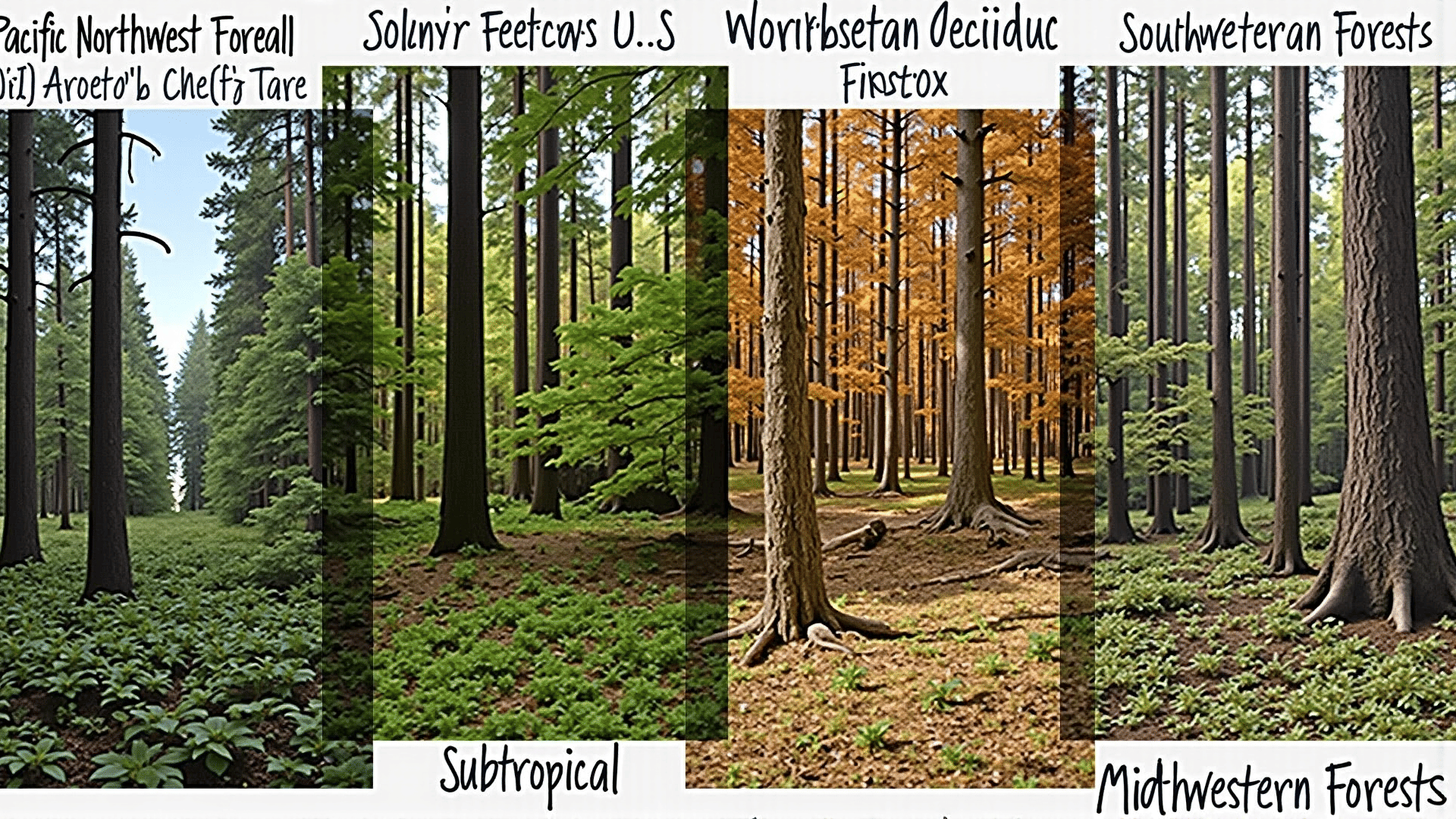The diverse landscapes of the United States, ranging from the dense forests of the Pacific Northwest to the arid deserts of the Southwest, provide a unique opportunity to study the growth rates of trees and the environmental factors that contribute to regional variations. Understanding these differences is essential for managing forests, conserving biodiversity, and addressing the impacts of climate change.
Regional Variations in Tree Growth
Tree growth rates can vary significantly from one region to another due to differences in climate, soil composition, and ecological interactions. In general, regions with optimal conditions for photosynthesis, such as adequate sunlight, sufficient rainfall, and nutrient-rich soil, tend to support faster tree growth.
The Pacific Northwest
The Pacific Northwest is known for its temperate rainforests, characterized by high humidity, frequent precipitation, and mild temperatures. These environmental conditions create a supportive habitat for tree species such as the Douglas fir, western hemlock, and redwood. The abundant moisture and moderate temperatures facilitate rapid growth, making this region home to some of the tallest trees on Earth.
The Southeast
The southeastern United States is characterized by a warm, humid climate with ample rainfall, which supports the growth of hardwood species like the southern oak and pine. The long growing season in the Southeast contributes to higher growth rates compared to more temperate or arid regions. Additionally, the nutrient-rich soils encourage robust root development and canopy expansion.
The Northeast
In contrast, the northeastern United States experiences a temperate climate with four distinct seasons. The cold winters and shorter growing season result in slower tree growth compared to the Southeast and Pacific Northwest. However, deciduous forests in this region, composed of species such as maple, beech, and birch, are adapted to this cycle, shedding their leaves annually to conserve energy.
Environmental Factors Influencing Growth
Several key environmental factors influence regional tree growth rates, including temperature, precipitation, soil quality, and competition for resources.
-
Temperature: Warmer temperatures generally promote faster growth rates, up to a point. However, extreme heat can stress trees, particularly if coupled with drought conditions.
-
Precipitation: Adequate water availability is crucial for tree health. Excessive rainfall can lead to waterlogged soils and root rot, while insufficient rainfall can result in drought stress, limiting growth.
-
Soil Quality: Nutrient-rich soils support better growth by providing trees with essential nutrients like nitrogen, phosphorus, and potassium.
-
Competition and Disturbances: Trees also face competition for sunlight, water, and nutrients from other vegetation. Natural disturbances such as wildfires, storms, and pest outbreaks can temporarily reduce competition, allowing some species to regenerate more rapidly.
The Impact of Climate Change
Climate change is altering the growth patterns of trees across the United States by modifying the distribution of precipitation, temperature, and other ecological factors. Prolonged droughts, increased frequency of extreme weather events, and shifting temperature zones are likely to impact the growth rates and health of forests nationwide.
For example, trees in the western U.S. are increasingly affected by drought conditions and escalating fire seasons. Such stresses can inhibit growth or lead to a higher susceptibility to pests and diseases. In contrast, the Midwest and Northeast might experience longer growing seasons due to warmer temperatures, although this could also result in the encroachment of invasive species and altered ecosystem dynamics.
Conclusion
Studying regional growth rates of trees and the contributing environmental factors provides critical insights into forest management and conservation strategies. As climate change continues to reshape the U.S. landscape, understanding these patterns will be essential for predicting future changes, preserving biodiversity, and maintaining ecological balance within these vital habitats. By integrating scientific research with conservation efforts, we can work towards sustaining healthy forests that contribute to the well-being of our planet.
